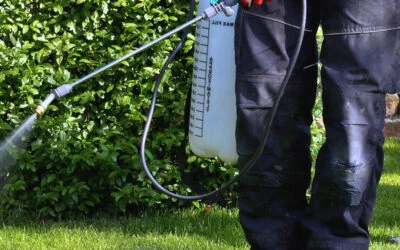
Answers to some of our most commonly received questions about all things “compost” can be found here.
Mulch or Compost?
These terms have been used almost interchangeably throughout the years when discussing mulch and compost. Compost is the beneficial product produced from the controlled biological decomposition of organic matter that is then worked into the soil to improve its physical, chemical and biological properties. It is derived from something that was once living. It can be made up of just about anything that was once living.
- Mulch is a material placed at the surface of the soil used more to maintain moisture in the soil, reduce erosion, keep weeds from growing and moderate soil temperature fluctuations. Mulches can be organic like shredded wood or lawn clippings or inorganic like shredded rubber or gravel.
- Compost is mixed with the soil. Mulch is laid on top of it. If you rake those leaves in the fall and place them around the plants, they are mulch. If you mix the leaves in with other organic matter in a compost pile, let them decay, and then spread them around the plants or mix in the soil, that is compost.
Quality Control
We test finished compost bi-monthly using the US Composting Council Seal of Testing Assurance testing methods. STA is a labeling and information disclosure program that analyses finished compost for pathogens, heavy metals, pesticides, and inert materials. STA ensures public health/safety and environmental protection as well as giving our customers piece-of-mind.
Compost Checks and Analysis
- Metals (arsenic, cadmium, chromium, copper, lead, mercury, molybdenum, nickel, selenium, cadmium, zinc)
- Pathogens (salmonella, E. coli)
- Polychlorinated biphenyls (PCBs)
- Plant available nutrients (NPK calcium magnesium)
- Moisture content
- Bulk density
- Organic matter percentage
- Particle size
- Soluble salts
- C/N ratio
- pH
- Stability and maturity (CO2 Evolution (respiration)
- Bioassay (seedling emergence)
PFRP and Temperature Testing
- The microbial activity that occurs throughout the composting process will heat up the piles to around 140-160+ degrees Fahrenheit. The active composting phase lasts between 45 and 60 days. During this step, the pile is dominated by thermophilic bacteria, which means bacteria that thrive in hot environments. This is the stage when most of compostable plastics are broken down and we sterilize the material by killing off pathogens, weed seeds and invasive pests to make sure it is safe and makes a beneficial compost.
- In order to ensure that the compost is safe for use, it needs to meet the Process to Further Reduce Pathogens, or PRFP. To do this, the pile will need to stay at or above 131 degrees F for 7 straight days. We check the temperature of each windrow every day in multiple locations to make sure temperature requirements are met. We also record the temperatures because it is a good indicator of the overall health of the pile. Temperature monitoring continues throughout the process so that we can see how active the pile is.
Inspections on Incoming Material add:
- When a hauler delivers organics to our facility, an inspector is there to monitor the load for contamination, and a load inspection form is filled out noting the quality of the load. If there is excessive contamination (non-compostable materials), pictures are taken of the material and sent to the hauler in an email explaining the problem and to resolve the issue. Loads that are overly contaminated can be partially rejected or all-together rejected. If a load is rejected, it is removed from the processing and brought to the solid waste transfer station where it is billed at a higher cost + fees.
- We work with haulers to ensure organics that are free of contamination are delivered to our facility. This ensures we are making a high quality compost that can be used anywhere to improve your soil.
What about feedstocks?
Wood works great for suppressing weeds as mulch and adding carbon to the soil over time as it breaks down, however using too much wood in compost manufacturing can lead to plant growth issues by robbing nitrogen from the plant to help break the wood down. Wood alone or sawdust should not be mixed directly into the soil. If too much wood is used in the compost process it can have adverse effects on your plant growth and require significant fertilizer inputs. Compost from food recovery, grass clippings, leaves, plant residue and some small amounts of wood fiber are typically better suited for a soil amendment that releases micro nutrients for the plants. Typically, manure-based composts have higher amounts of nutrients available for plants.
What should I look for when buying compost?
Is your compost managed by someone adhering to the rules and regulations of the State of MN? Does your compost supplier provide test data to show the maturity and safety of the product? Does your producer meet PFRP to significantly reduce the risk of spreading pathogens, weed seeds or invasive pests? Will the compost help or hinder plant growth due to its stability, feedstock or salt levels?
SET has answers for all your compost questions:


